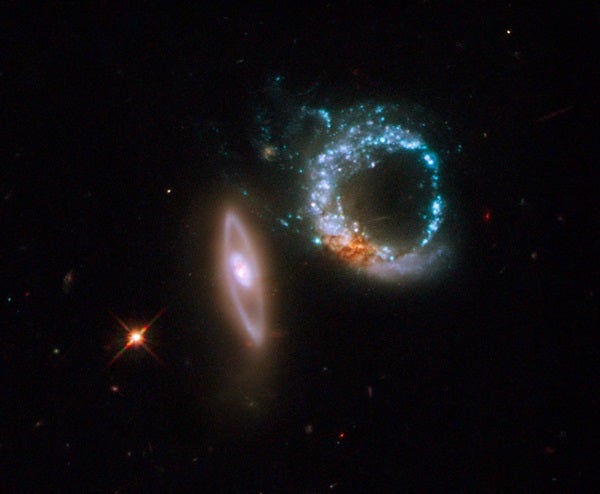Just a couple of days after the orbiting observatory was brought back online, Hubble aimed its prime working camera, the Wide Field Planetary Camera 2 (WFPC2), at a pair of gravitationally interacting galaxies called Arp 147.
The galaxy pair was photographed October 27-28, 2008. Arp 147 lies in the constellation Cetus, and it is more than 400 million light-years away Earth.
The image shows the camera functions as it did before going offline.
The two galaxies happen to be oriented so that they appear to mark the number 10. The left-most galaxy, or the “one” in the image, is relatively undisturbed apart from a smooth ring of starlight. It appears nearly on edge to our line of sight. The right-most galaxy, resembling a “zero,” exhibits a clumpy, blue ring of intense star formation.
The blue ring probably formed after the galaxy on the left passed through the galaxy on the right. Just as a pebble thrown into a pond creates an outwardly moving circular wave, a propagating density wave was generated at the point of impact and spread outward. As this density wave collided with material in the target galaxy that was moving inward due to the gravitational pull of the two galaxies, shocks and dense gas were produced, stimulating star formation.
The dusty reddish knot at the blue ring’s lower left probably marks the location of the original nucleus of the galaxy that was hit.
WFPC2 used three separate filters to capture the picture. The blue, visible-light, and infrared filters are represented by the colors blue, green, and red, respectively.










